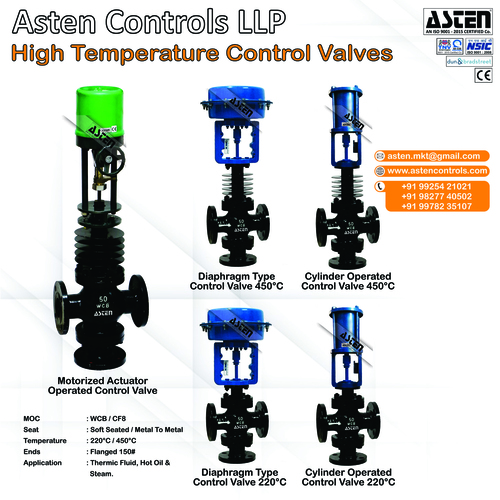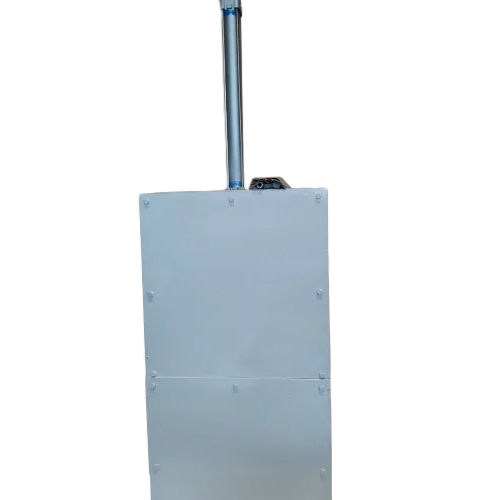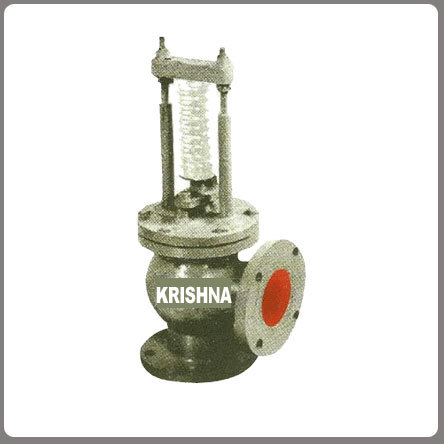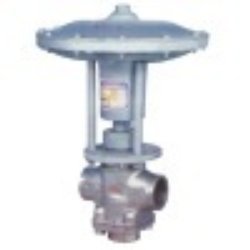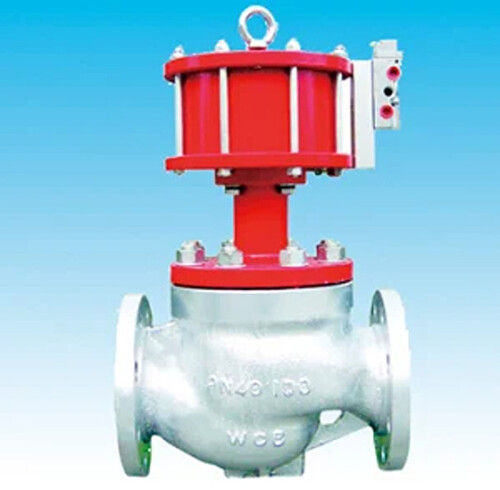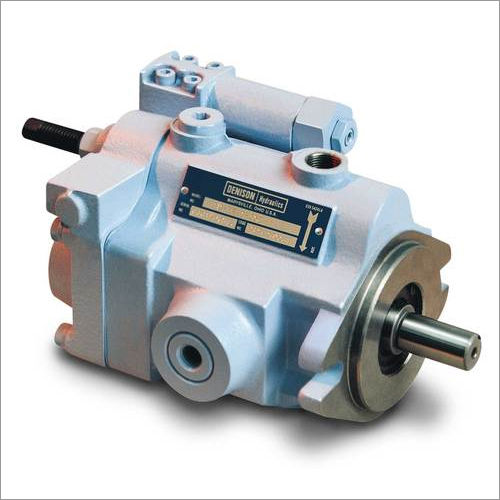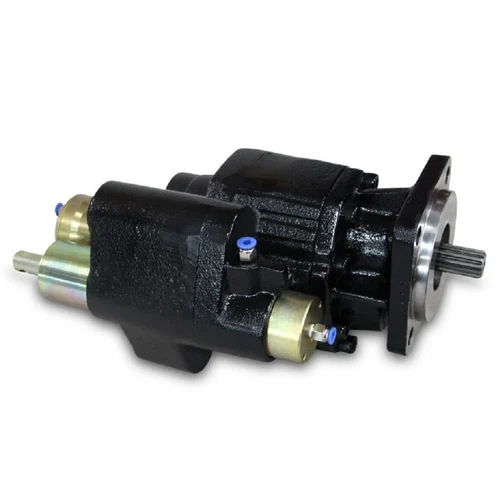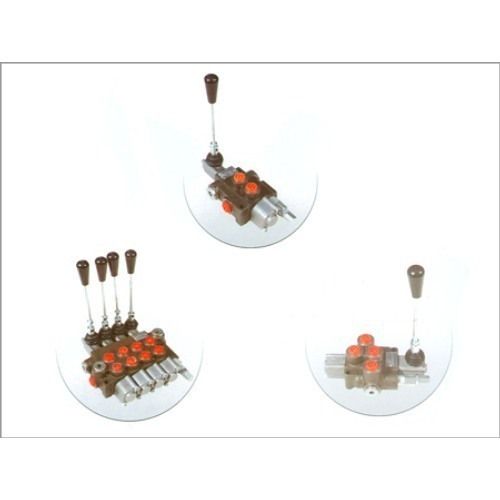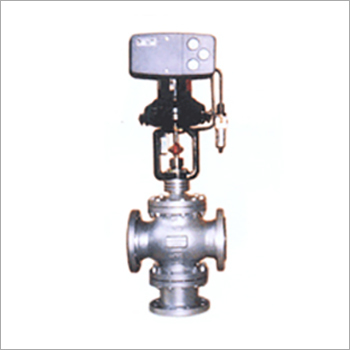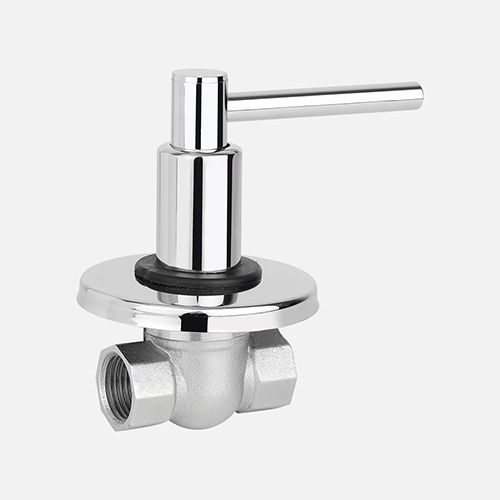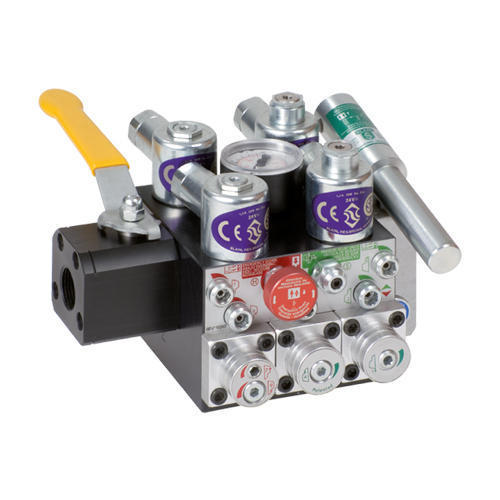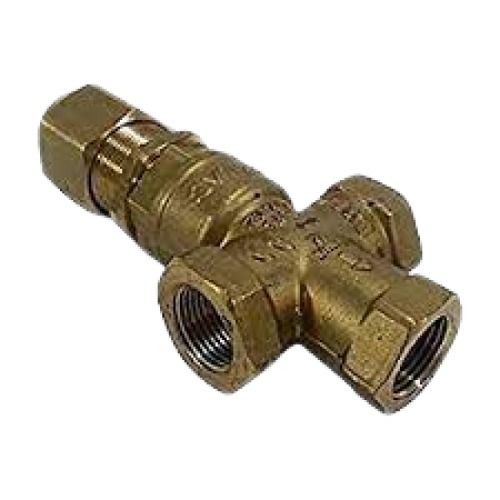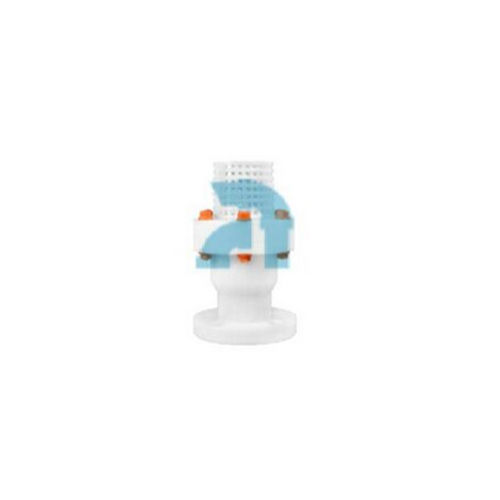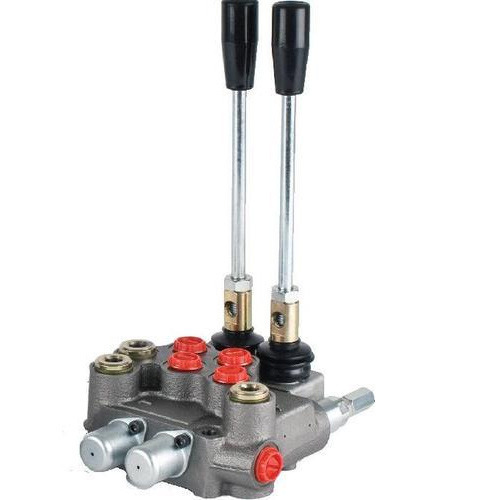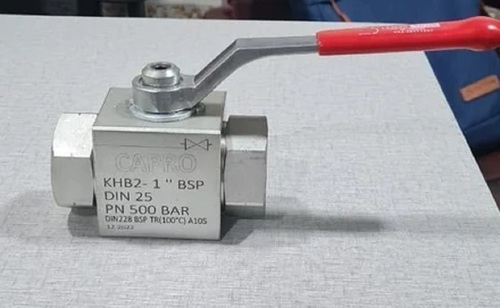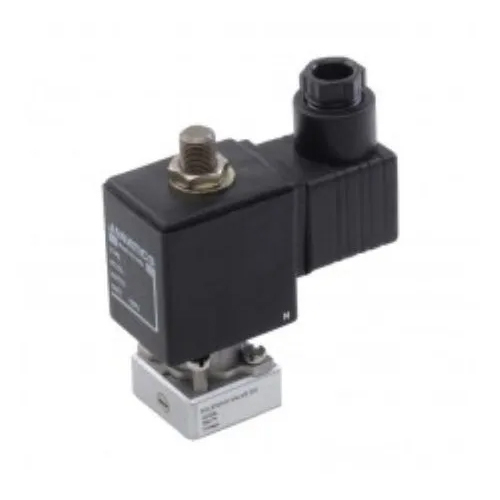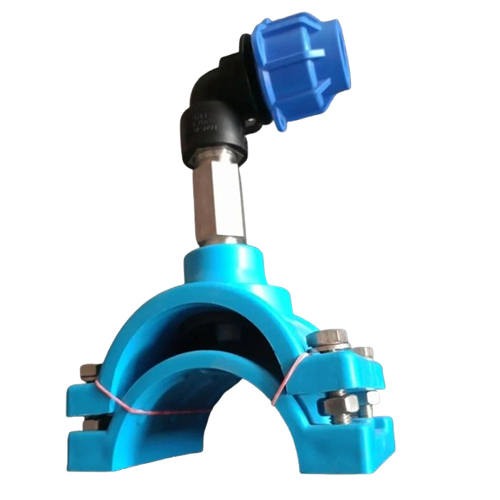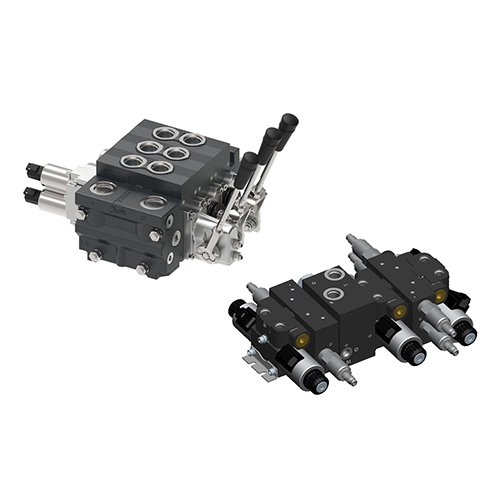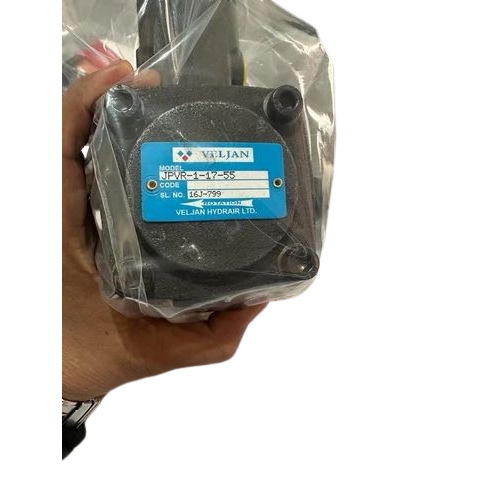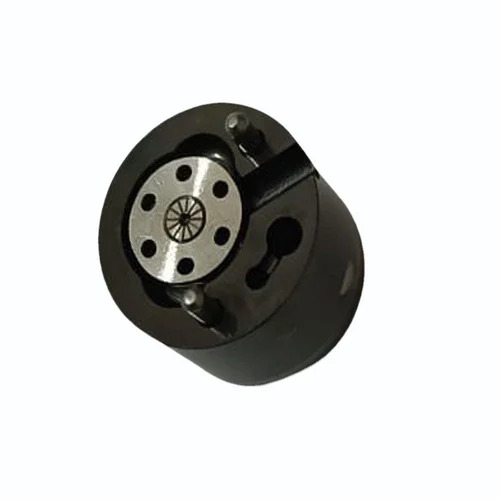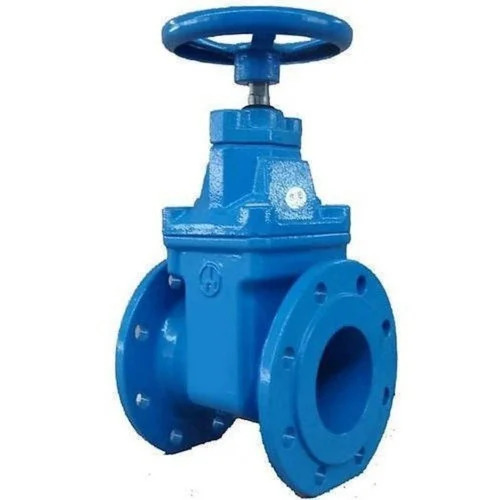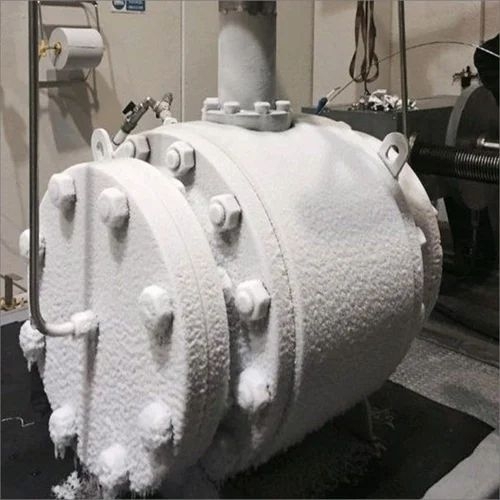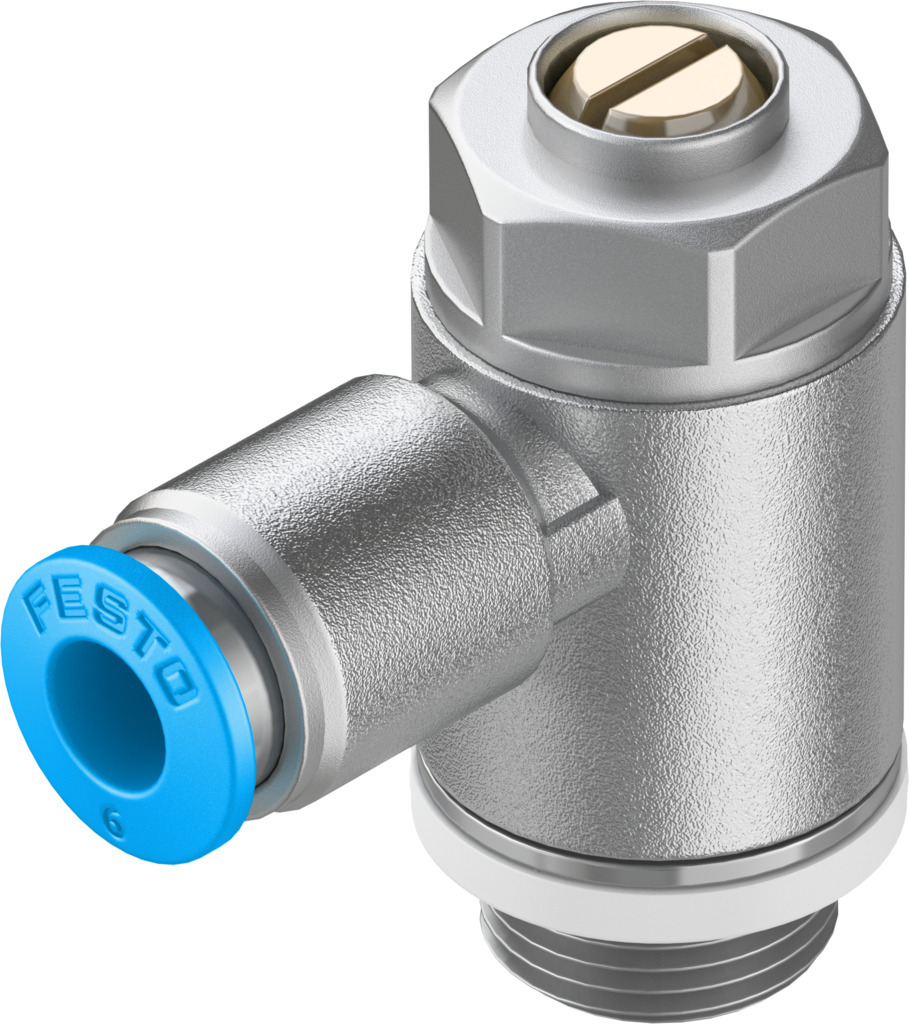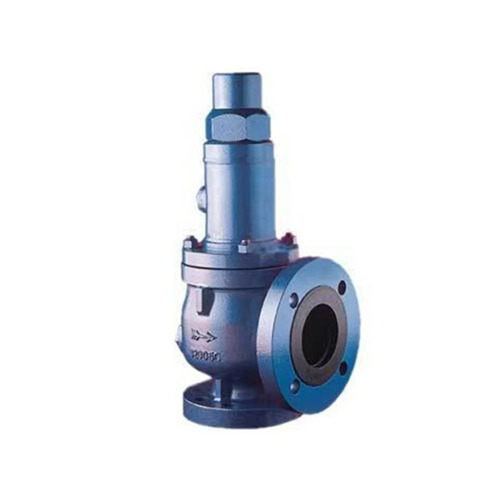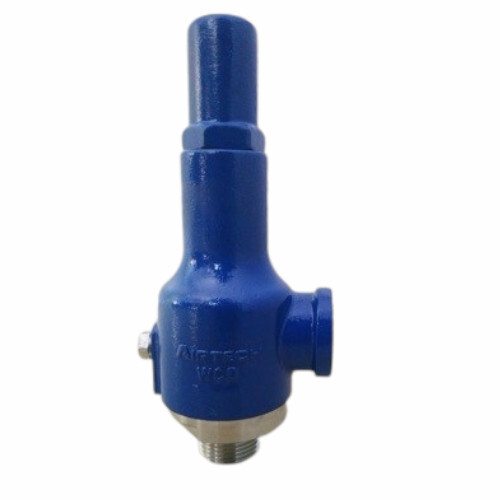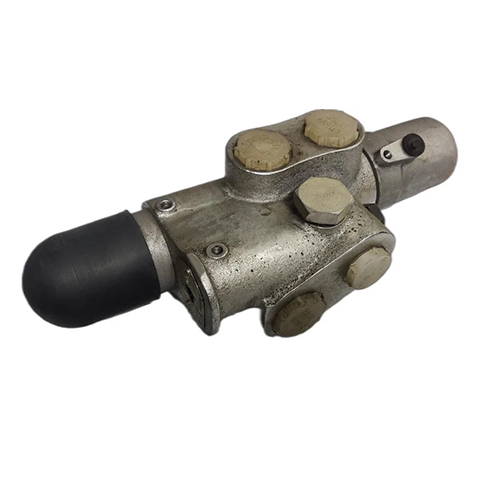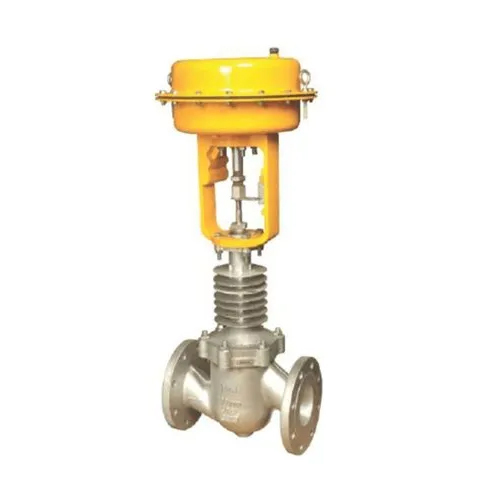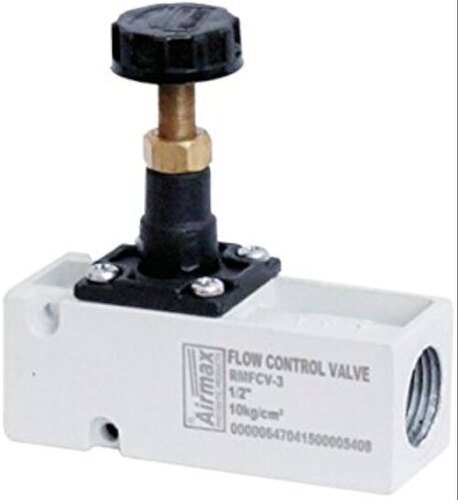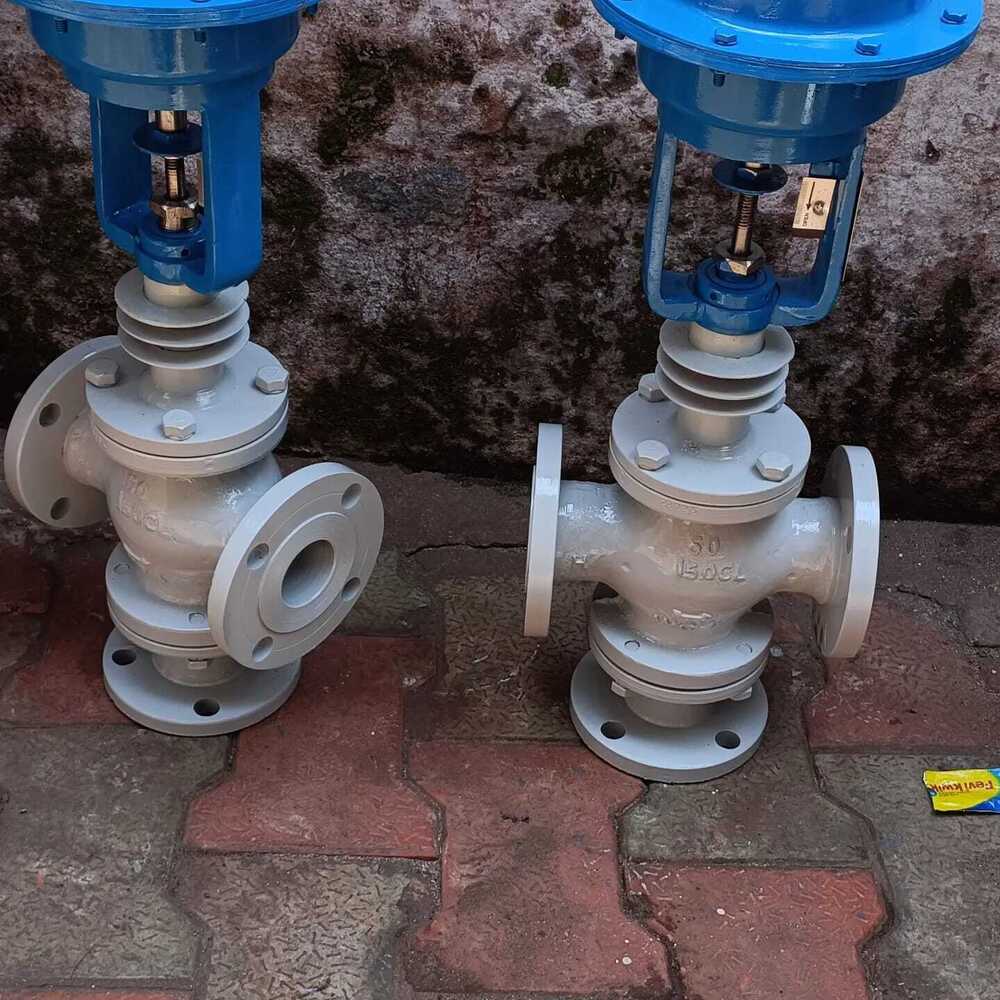Control Valves
(3429 products)Y Type Control Valve - Supreme Grade Quality Components | Reliable Vendor Sourced Manufacturing, Industry Norm Compliance
Payment TermsDelivery Point (DP), Days after Acceptance (DA), Cheque
Sample AvailableYes
Sample PolicyContact us for information regarding our sample policy
Powder Coated Industrial Control Valve Size: 2 Inch To 48 Inch
Price: 150000 INR/Unit
MOQ1 Unit/Units
ApplicationOil and Gas, Power Generation, Water Treatment, Chemical Processing
UsageUsed in various industrial processes to regulate the flow rate, pressure, temperature, or level of a fluid
ConnectionOther
Product TypeControl Valve
Size2 to 48 Inch
MaterialStainless Steel, Plastic, Casting, Alloy, Brass, Forged, Rubber, pvc, upvc, Wood, Carbon Steel, PP-R, Ductile Iron, Nylon, Aluminum, Ceramic, Other
Compensated Proportional Valve - Material: Forged
Price: 35000 INR/Unit
MOQ10 Unit/Units
UsageIndustrial
SizeDifferent available
SealingSealed
MaterialForged
Port SizeCustomized
Pipe Connection TypeSocket
Suyojan Hydromechanical Systems Private Limited
Vasai
Cast Iron Hydraulic Pressure Relief Flow Valves
Price: 35000 INR/Piece
MOQ1 Piece/Pieces
SizeEFBG 03 and EFBG 06
Product TypeHydraulic Pressure Relief Flow Valves
UsageIndustrial
StructureCheck
MaterialCast Iron
PowerHydraulic Watt (w)
Control Valves - Material: Stainless Steel
Price: 17000.00 INR/Piece
MOQ1 , Piece/Pieces
UsageIndustrial
Product TypeControl Valves
Size1/2 to 12
MaterialStainless Steel
MediaWater
PowerElectrical
Casting Pneumatic Control Valve
MOQ10 Unit/Units
UsageIndustrial
SizeDifferent Sizes Available
MaterialCasting
Pipe Connection TypeFlange Type
Pressure Relief Valve - Stainless Steel | High Durability, Precise Pressure Control, Reliable Flow Management
Price: 500 INR/Piece
MOQ1 , Piece/Pieces
Supply Ability1000 Per Month
Delivery Time1 Months
Grey 2/2 & 3/2 Way Diaphragm Type Control Valves
Price Trend: 5000.00 - 50000.00 INR/Piece
MOQ1 Piece/Pieces
Product TypeControl Valves
UsageFor Control liquid
MaterialStainless Steel
MediaWater
Weight100-150 Grams (g)
ColorGrey
High Strength Pressure Relief Valve
Product DescriptionSkywin make cast carbon steel, angle type design, spring loaded, pressure relief valve flanged end to 150 class, suitable for air, water, gas, crude oil.\015\012\015\012Application: Industrial\015\012Construction: Strong\015\012Corrosion Resistivity: High
Program Control Valves
MOQ5 Unit/Units
Product TypeProgram Control Valves
ApplicationIndustrial use
ColorWhite, Blue
Pressure Control Valve - High Temperature, Hydraulic Power | Durable Performance for Reliable Fluid Management
Price: 45000 INR/Piece
MOQ1 Piece/Pieces
TemperatureHigh Temperature
PowerHydraulic
Idle Control Valve
Product DescriptionOur clients can avail from us a qualitative assortment of Idle Control Valve which is manufactured, supplied and exported us from Jamnagar, Gujarat, India. These are made by high grade of material. These are according to the client specification.\015\012Specification:\015\012Product Name- air contro
Cast Iron Aber Pv Pvb Gear Pumps With Integrated Valve
Price: 80000 INR/Piece
MOQ1 Piece/Pieces
Product TypeABER PV PVB Gear Pumps With Integrated Valve
Weight20 Kilograms (kg)
UsageIndustrial
StandardHigh
MaterialCast Iron
Industrial Mobile Control Valve - High-Grade Engineering | Safe for Industrial Use, Trustworthy Performance Across Various Industries
Payment TermsOthers, Telegraphic Transfer (T/T)
Delivery Time2 Week
Sample PolicyContact us for information regarding our sample policy
Hydraulic Control Valves
Price Trend: 7000.00 - 20000.00 INR/Piece
MOQ10 Piece/Pieces
Supply Ability1 Per Month
Delivery Time1 Months
Mahavas Precision Controls Private Limited
Pune
 Trusted Seller
Trusted Seller7 Years
Brass Control Valve - 375 Grams | Industrial & Commercial Use, Corrosion Resistant, High Efficiency, Easy to Install
MOQ200 Piece/Pieces
Product TypeControl Valve
Weight375 Grams (g)
UsageIndustrial & Commercial
ColorSilver
StandardHigh
MaterialBrass
Elevator Flow Control Valve - Stainless Steel, 10-125 l/min Flow Range, 5-100 bar Pressure Range, 5 kg Weight, Black Finish | Blain Hydraulics
Payment TermsCash on Delivery (COD), Letter of Credit (L/C), Letter of Credit at Sight (Sight L/C), Cash in Advance (CID), Cheque
Delivery Time25-30 Days
Sample AvailableYes
Ksd Equipments Private Limited
Ahmedabad
 Trusted Seller
Trusted Seller6 Years
Proportional Control Valves - Cast Iron, 5000 psi Maximum Pressure | Industrial Application, Low Maintenance, Long Functional Life
Price: 78000.00 INR/Piece
MOQ1 Piece/Pieces, Piece/Pieces, Piece/Pieces
ApplicationIndustrial
MaterialCast Iron
TemperatureNormal Temperature
MediaOil
StructureControl
Ss Water Flow Control Valve Application: Industrial
Price: 46.0 INR/Unit
MOQ250 Pieces
UsageHOUSE WATER CONNECTION
Weight125 Grams (g)
ApplicationIndustrial
ColorSilver
Length71 Millimeter (mm)
SizeDifferent SIZE
Earth Water Pipe Fittings Private Limited
Rajkot
Flow Control Valve Color Code: White
Payment TermsOthers, Cash Against Delivery (CAD), Telegraphic Transfer (T/T)
New 220 Volt Brown Gas Pressure Relief Valve - 12mm Size, Polished Casting Material | Durable Heat Sealing, Low Temperature, 3 Inch Length, Thread Connection
Price: 12000 INR/Piece
MOQ4 Piece/Pieces
UsageRelieve Over Pressure Function
Width4 Millimeter (mm)
Voltage220 Volt (v)
ColorBrown
Length3 Inch (in)
ConnectionThread
Boiler Steam Control Valve - Color: Grey
Price: 2000 INR/Unit
MOQ1 Unit/Units
SizeDifferent Size
ApplicationSteam
UsageIndustrial
ColorGrey
StandardHigh
MaterialCast Iron
Solenoid Control Valve - High-Quality Raw Material | Durable Design, Reliable Performance
Product DescriptionWe are Bengaluru, Karnataka, India situated one of the most reliable names actively engaged in exporting, trading and supplying a superior quality array of Mining Shank Adapter. The Solenoid Control Valve offered by us is sourced from the highly acclaimed vendors of the industry who design and manu
Aira Trex Solutions India Private Limited
Bengaluru
Stainless Steel Control Valve - Manual Operation, Powder Coated Finish, Various Port Sizes, Long Life Functionality
Price: 8000 INR
MOQ1
Port Sizevarious sizes are available
Motorized Control Valve - Sealing: Sealed
Price: 31500 INR/Piece
MOQ1 Piece/Pieces
Product TypeMotorized Control Valve
UsageIndustrial
SealingSealed
StandardHigh
MaterialOther
MediaWater
Direction Control Valve - Aluminum, Different Sizes Available, Black Color | Electrical Power, High Temperature Operating Capability
Price: 8000 INR/Unit
MOQ1 Unit/Units
Product TypeDirection Control Valve
UsageIndustrial
SizeDifferent Available
ColorBlack
MaterialAluminum
TemperatureHigh Temperature
Stainless Steel Pressure Reducing Control Valve - Semi-Automatic, Horizontal Mounting Style, Blue Color | Optimized for Water, Oil, Gas Applications
Price: 80000 INR/Piece
MOQ5 Piece/Pieces
ColorBlue
UsageWater/Oil/Gas
Product TypePressure Reducing Control Valve
ApplicationWater/Oil/Gas
MaterialStainless Steel
MediaOthers, Water/Oil/Gas
Foot Valves Flanged End Application: Industrial
MOQ50 Piece/Pieces
Product TypeFlanged End Valve
ColorWhite
ConnectionFlange Type
ApplicationIndustrial
Pipe Connection TypeFlange Type
Latest From Control Valves
Cast Iron Direction Control Valves
By:
Qualitech Industrial Products
Load sensing directional control valves
By:
Suyojan Hydromechanical Systesms Private Limited
Ready To Ship Control Valves
What is Control Valves?
Control Valves are designed for regulating the rate of fluid flows which happen as a result of positioning the valve by changing the actuator. In valves, an actuator is a handle that can be manual-operated or power-operated. Control valves are manufactured for near precise controlling of the flow of liquid or gas in a piping system. It is done by maintaining predetermined set points which are flow rate, temperature, and pressure. Control valves also control the product parameters, such as density, liquid level, concentration, and other factors.
Control Valves consist of the main body, positioner, actuator, and accessories. The valve body comprises a bonnet assembly and trims parts. The design of the control valves are so developed that they can withstand differential pressure and fluid static pressure. It permits fluid flow, ensures pipe-connecting ends, and assists the seating surface as well as a valve closure component. Actuators could be manually-operated or power operated. In manual operation, two types of actuators are used: hand lever and gearbox. In the power-operated type electric, a hydraulic and pneumatic actuator is used. The positioners in the valve monitor and control the actuator movement to maintain the flow rate, temperature, and pressure at set points. In control valves, the accessories are pressure regulators, electro-pneumatic transducers, position indicators, limit switches, and handwheels.
Control Valves are mainly used for controlling the flow of liquid, gas, and slurries. These are designed for use in:
- Pipeline
- Oil & Gas plants
- Marine industry
- Food & beverage plants
- Pulp and paper mills
Some Common Types of Control Valves
Following are some common types of control valves based on their operations:
Sliding stem
- Globe valve – Flow control device
- Angle body valve
- Angle seat piston valve
- Axial Flow valve
Rotary
- Butterfly valve – Flow control device
- Ball valve – Flow control device
Other
- Pinch valve
- Diaphragm valve – Flow control device
Components of Control Valve
Here are the main components of control valve:
-Body
It is a specific kind of pressurised container that has either an aperture or an opening. The controlled liquid is let to pass through the body of the valve as it is opened and closed. Monitoring the behaviour of the flow regulation is made easier as a result.
-Trim
In addition to the body, the trim is another component of the valve that has direct contact with the fluid being controlled. It is made up of the stem, as well as the seat, disc, and plug.
-Actuator
To give the necessary force to operate the control valve, it is made up of electric or pneumatic mediums to transmit the force.
-Bonnet
The bonnet serves as a mounting point for the control valve guide and the actuator, as well as a channel for the stem to move through. The guide, the packing, the packing nut, and the centrepiece are the components that make it up. Between the bonnet and the stem is a piece of packing that serves as a kind of fastening. It contributes to the prevention of any leakage.
-Seat and Disk
The disc is the third principal pressure boundary for a bonnet-style valve. The disc allows you to control whether or not fluid may pass through it. When the disc is closed and the outlet side is depressurized, the entire system pressure is transferred across the disc.The disk's ability to maintain pressure is why it's so important. To improve their durability, discs are often forged and, in some designs, given a hard surface. In order to provide a tight seal when a valve is closed, the seating area of a disc must have a smooth surface finish. The shape of the discs on most valves is reflected in their names.
Control Valve Flow Characteristics
Each type of control valve has its own unique flow characteristic that specifies the relationship between "valve opening" and flow rate at a given pressure. Valve opening here means the distance between the valve plug and the valve seat when the plug is in its closed position. The orifice pass region is not being discussed here. The orifice pass area, also referred to as the "valve throat," is the smallest opening between the valve plug and seat. No matter how a valve is described, there is a constant one-to-one relationship between flowrate and orifice pass area.
When the volumetric flowrate and differential pressure through a valve are both constant, the orifice pass area will be the same regardless of the valve size or inherent flow characteristic. However, for the same pass area, different valve characteristics will result in different 'valve openings.
When comparing linear and equal percentage valves, a linear valve's valve opening might be 25% for a given pressure drop and flowrate, while the corresponding value for an equal percentage valve might be 65% under the same conditions. The passageways through the orifices won't change. The trim, or actual shape of the plug and seat combination, is what determines the degree to which these valves open and close. For both globe valves (where the plug moves up and down with respect to the seat) and rotary valves, the term "valve lift" is used to describe the opening motion lateral movement of the plug relative to the seat.
In general, rotary valves like ball and butterfly valves have the same basic characteristic curve, though this can be altered by making small adjustments to the plug for the ball or butterfly valve.
Different Flow Characteristics of Control Valves
-Linear
If, under ideal conditions of constant valve pressure drop, a straight line can be drawn from the flowrate F (or % F, or Cv or % Cv) to the percentage of travel m (or Z for opening position), then the control valve is said to be linear (DPV). As a result, for a fixed valve pressure drop, an increase in travel or opening m results in the same change in flow F (or Cv) (DPV). dm = k dF, where k is a proportional constant, where m is the distance travelled and F is the flow rate.
-Fast Opening
Its flow rate, or Cv, increases exponentially from its starting, small opening to its maximum, large opening. Benefits of the Valve Upgrade Using Kv for modulating control in the start or bottom portion of the trip position is not possible. After that initial steep portion, the flowrate rarely rises as a function of valve opening m. Therefore, such a control valve can only be used in ON-OFF service or in applications where a quick initial release or discharge of flow is required.
-Modified Parabolic
Besides the more frequent Linear and Equal% characteristics, there is also a less common kind called "modified parabolic," which provides excellent throttling action at low valve travel (like Equal%) and an almost linear characteristic for the upper section of flight.
Below the Linear characteristics, the so-called hyperbolic characteristics appear as a "bowed" rectangular plot. Quick-Opening and modified parabolic characteristics are listed primarily for completeness, as Linear and Equal% characteristics can satisfy virtually any control need.
-Inherent Control Valve Flow
When the pressure drop across the control valve is held constant, only then can the manufacturer declare the flowrate to valve travel position connection known as the Inherent valve characteristics. To emphasise, a nearly constant pressure drop across the control valve is only possible if the pressure drop in the piping system is localised to the valve itself, rather than being spread out along the pipeline.
-Installed Control Valve Flow
One that controls the pressure The installed characteristics define the link between the cubic flow rate through into the valve and the valve trip or opening position as the valve is opened from the closed to a varied degree of opening.
What Is Pneumatic Flow Control Valve?
A pneumatic flow control valve is used to regulate the flow of pressurised air across a larger pneumatic system. This valve can either permit or prevent the flow of pressurised air, the force of which is subsequently applied to the operation of a device. Since valves can have any number of inlets and outlets, they can create a wide range of airflow configurations. Valves are categorised according to the number of ports that they have and the flow patterns that they generate.
In addition, given their ability to move air in a number of different ways, they are adaptable to a wide range of applications. Other types of valves, such as pressure regulators, venting-type regulator valves, and needle valves, are designed to fulfil functions that are more specialised than those served by directional control valves, which are the most prevalent form of control valve. Pressure valves or venting-type valves help regulate pressure in a pneumatic air pressure, while needle valves regulate flow.
The Use of Control Valves In Hydraulic Systems
It's not uncommon to see hydraulic power systems in automobiles and aircraft machinery. They have a high power-to-weight ratio and are capable of being put into a resting state, working in bursts, and even reversed. They have lightning-fast reflexes and movement. Fluid control devices not only provide consistent operating levels, but they can also be very long term, which is a major selling point. While some hydraulic equipment can function with a variety of valve configurations, the vast majority requires a dedicated valve.
1. Hydraulic Flow Control Valve
The liquid or gas flow through the system can be monitored and adjusted using the flow control valves. Those valves are designed to improve the hydraulic system's performance to its full potential. Flow control valves are employed for monitoring and adjusting pressure swings in a given system.
2 Pressure Controlling Hydraulic Valve
Pipelines are less likely to leak or explode when the hydraulic pressure is reduced. Pipeline fluid pressure is constantly being measured via pressure control valves. These valves automatically hold the pressure setting that the user has set manually. Counterbalance valve, pressure lowering valve, Hydraulic pressure relief valve, and series valve are some of the several types. A complicated mechanism and series valve power, the counterbalance valve can detect extremely high pressure. One of the most fundamental functions of a pressure relief valve is to return any pressure above the present limit to the storage tank.
3. Direction Controlling Valves
Controlling the release of fluids from the system is accomplished with the help of Direction control valves. Fluid flow can be halted and restarted with these valves. They can usually redirect the flow of the fluid. Multiple lateral control valves, such as a spool valves, prefill valve, test valve, etc., are employed to ensure enough fluid flow within the apparatus. The test and the prefill valves are examples of non-return valves. In order to regulate the pressure in the supply system, control valves are installed. Reduced water loss due to leaks is one of the many benefits of using automatic control valves for pressure and flow management. Safer plumbing with less chance of water hammer and broken pipes.
Best Quality Control Valves available online with price
Buyers interested in buying Control Valves in different types as per their requirements may check the vast availability of all types of control valves. They can check every detail, specification, price, type, dimensions, and their specific applications on different eCommerce platforms. They can connect with control valves manufacturers and suppliers listed at reputed B2B portals for fulfilling their demands.
Buyers interested in buying control valves in bulk quantity should check the features and other details, such as:
-Quality standards
-Material of construction
-Service life
-Product durability
-Minimum order quantity
-Price
-Available stock
-Delivery time
Buy Control Valves Online
Buying Control Valves has become so easy with different B2B marketplaces unveiling a large collection of Control Valves of all types and dimensions. Buyers interested in purchasing in bulk quantity may send all their demands to listed manufacturers at online marketplaces.
Buyers can also take a look at sub-categories available here:
-Pneumatic Angle Type Control Valve
-Hydraulic Control Valve
-Ptfe Lined Globe Control Valve
-Y Type Control Valve
-Actuated Valves
-Direction Control Valves
-Pressure Control Valve
If you are interested in buying control valves, get the contact details of the sellers and send them your requirements.
FAQs: Control valves
Q. What is a control valve and used for?
Ans. A control valve is a device that regulates the flow of a fluid, such as water, gas, or steam, through a pipe or system. It is used to control the pressure, temperature, and flow rate of the fluid.
Q. How does a control valve work?
Ans. Control valves work by adjusting the flow of fluid through the valve. This is typically done by a valve actuator, which moves a valve element, such as a ball, disc, or diaphragm, to change the flow rate. The valve element is typically connected to a control signal, such as a pressure or temperature sensor, which tells the valve how to adjust the flow rate.
Q. What is an actuator in the control valve?
Ans. An actuator is the main component that starts, stops, or throttles the flow of media in a pipeline. It can be hand-operated or power-operated, such as electric, pneumatic and hydraulic.
Q. What is the difference between a control valve and a ball valve?
Ans. A control valve is a linear motion valve whereas a ball valve is a quarter-turn valve similar to a butterfly valve.
Q. What is the main purpose of a control valve?
Ans. A control valve precisely controls the flow of media in a pipeline. It has a mechanism to set points against flow rate, pressure, and temperature.
Q. Where can buyers purchase control valves?
Ans. Buyers can check the range available at the trusted B2B marketplace where they can connect with several manufacturers and suppliers to fulfilling their requirements.
Q. What is a pneumatic actuator in a control valve?
Ans. A pneumatic actuator uses compressed air pressure to set the actuator in a controlled motion to turn the valve for opening, closing, or throttling the flow of media.
Q. What are the different types of control valves?
Ans. There are many types of control valves, including globe valves, ball valves, butterfly valves, diaphragm valves, and more. Each valves has its own unique features and characteristics and is best suited for specific applications.
Q. What are the benefits of using control valves?
Ans. Control valves offer many benefits, including precise control of fluid flow, improved system efficiency, and the ability to maintain a safe and stable operating environment. They also can help in reducing pressure and temperature fluctuations, and preventing system damage.
READ MORE BLOG:
- India's Best Quality Top 10 Control Valve Manufacturers, Suppliers & Exporters
- Top 10 Air Valves Manufacturers, Suppliers & Exporters in India
- Butterfly Valves Manufacturers, Suppliers & Exporters In India - 10 Best
- Best Ball Valves Manufacturers, Suppliers & Exporters in India
- Top 10 Gate Valves Manufacturers, Suppliers, Exporters in India
- Top 10 Finest Quality Globe Valves Manufacturers, Suppliers & Exporters in India
- Top 10 Highest Grade Industrial Valve Manufacturers, Suppliers & Exporters in India
- Top Notch Rotary Valves Manufacturers & Suppliers in India
- Stainless Steel Valves Manufacturers Suppliers Exporters in India: Complete List
Manufacturers & Suppliers of Control Valves
Company Name | Member Since |
|---|---|
Dynamic Enterprises Inc. Pune, India | 16 Years |
Joy Krishna Engineering Works Howrah, India | 15 Years |
Shri Shyam Hydraulics Indore, India | 15 Years |
Bhargav Brass Industries Jamnagar, India | 14 Years |
Jacktech Hydraulics Ahmedabad, India | 13 Years |
Ally Hi-Tech Co., Ltd. Chengdu, China | 12 Years |
Asva Corporation Ahmedabad, India | 10 Years |
Asten Controls Llp Ahmedabad, India | 9 Years |
Mahavas Precision Controls Private Limited Pune, India | 7 Years |
Uflow Automation Rajkot, India | 6 Years |
Popular Products









